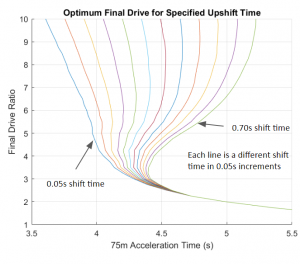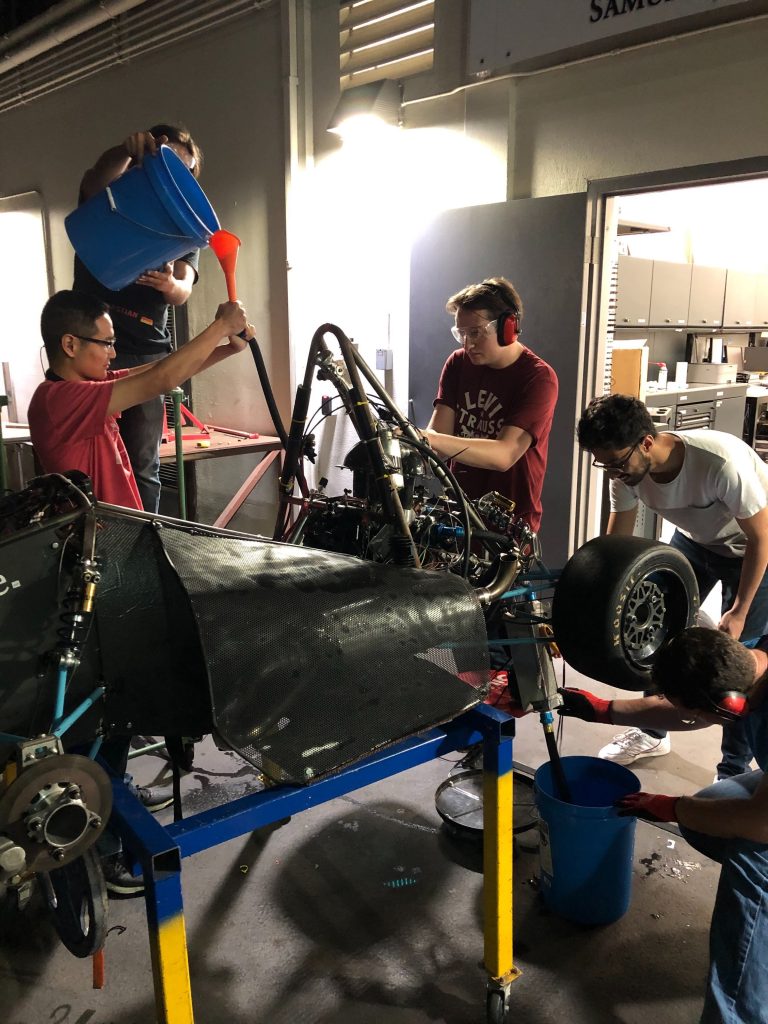
We are back! Anteater Racing, upon receiving permission from the Henry Samueli School of Engineering at UC Irvine, resumed on-campus work on its SAE Collegiate Design Series competition vehicles with COVID-19 safety precautions. All three projects, Anteater Formula, Baja and Electric Racing, are currently manufacturing their vehicles at the Vehicle Performance Engineering Lab in anticipation for the 2021 Formula SAE and Baja SAE competitions. In addition, all three projects have successfully registered for their vehicle class’ Knowledge Events.
“Anteater Formula Racing is super excited to hear the good news that the team was granted access to the UCI School of Engineering Senior Design Project workspaces,” said Daniel Martinez, AFR Assistant Project Manager, Project Logistics. “Thank you to the Henry Samueli School of Engineering administrative staff and Professors Georgiou and McCarthy for helping us in this endeavor!”
Precautions include mandatory face coverings, frequent lab cleanings with disinfectants, reduced workspace personnel capacity, an online workspace booking procedure, and an online symptom check-in prior to arrival at facilities. Anteater Racing’s Project Members are only using spaces for essential manufacturing tasks, and they are continuing to hold meetings and perform all non-manufacturing tasks remotely. Members are also informed that they may opt out of on-campus tasks at any time.
Each project will spend Fall Quarter, October to mid-December, manufacturing their vehicles for the 2021 competitions. Anteater Electric Racing and Anteater Baja Racing both will construct new vehicles with inspiration and improvements from the 2019-20 season, titled “Ampeater II” and “Vandal II,” respectively. Anteater Formula Racing will finish “Jinx” as a two-year car with design upgrades developed during the COVID-19 manufacturing freeze.
With the pandemic, the SAE Collegiate Design Series announced changes to the event registration process for 2021. First, all teams in Formula SAE and Baja SAE register first for their Knowledge Events, which include the Design Event, Cost Event and Business Event/Sales Presentation, all of which will be held online. Once teams secure a spot, they will have the option to register again for the Validation Events, which include all of the trademark Dynamic events: Acceleration, Skidpad, Autocross, Endurance and Efficiency for Formula SAE and Acceleration, Hill Climb, Land Maneuverability, Suspension, and Endurance for Baja SAE. All three projects have successfully registered for their Knowledge Events, and all intend to register for Validation Events in November.
#151 – Anteater Baja Racing
#231 – Anteater Electric Racing
#034 – Anteater Formula Racing
Words & Photo by Noah Stein






